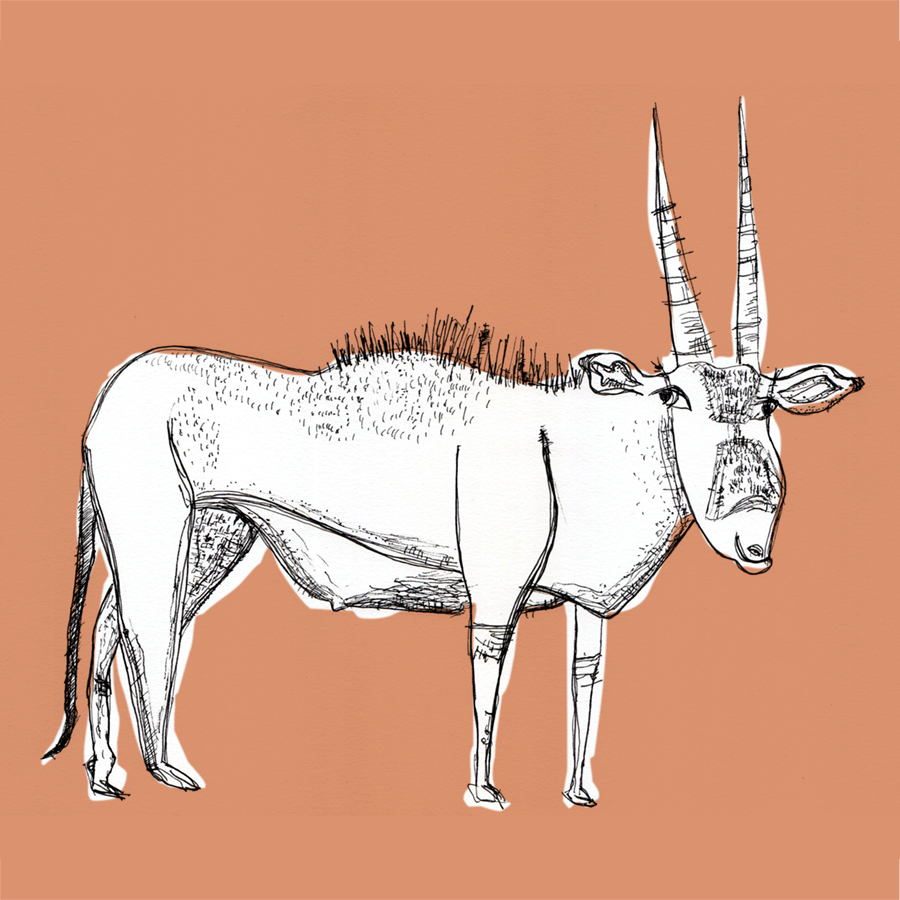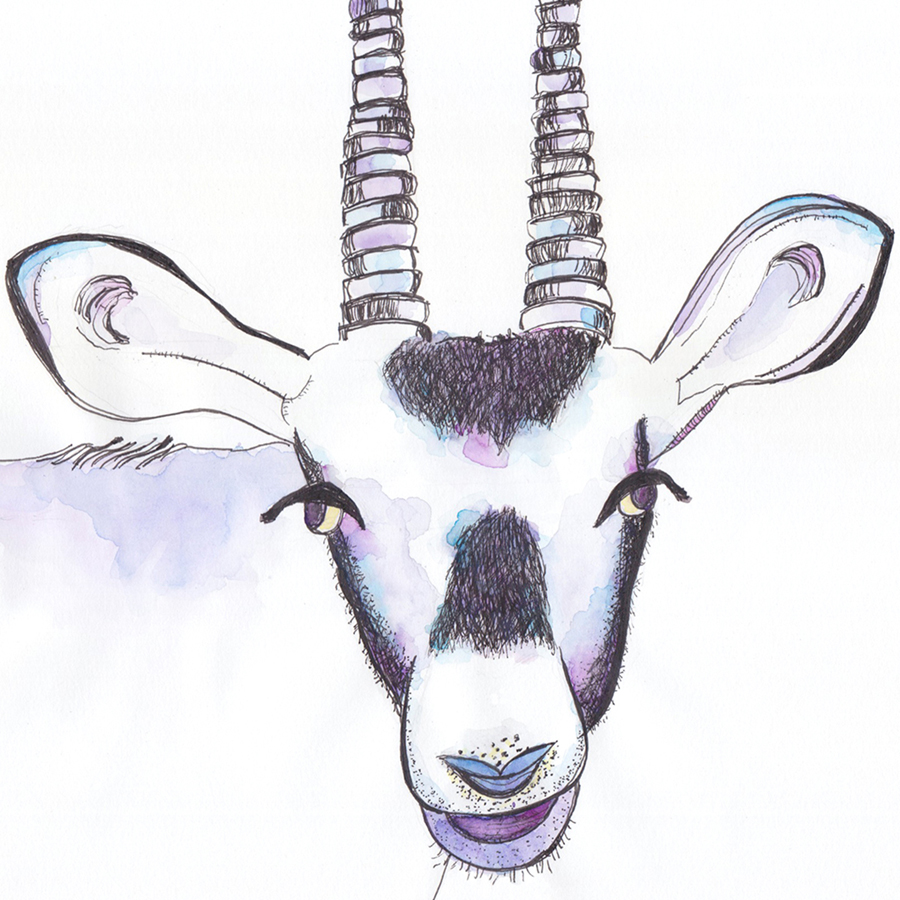The Arabian oryx, with its unique combination of features—white coat that deflects the sun, delicate black hooves that mold into sand, pitch black geometric face markings, legs that look like they are wearing dark stockings, horse-like neck, an always moving paintbrush tail—is otherworldly.
Their most magnificent attribute, ridged pyramid-shaped antlers that are often 3 feet tall, are half its body size. They gracefully transport two very narrow high-rises on their head.
Living in a place rarely seen by anyone else
I learned about these desert dwellers while researching animals that live under extreme weather conditions. As I armchair-travel-scrolled, I came across striking photos of oryx in desert wildernesses.
They looked like sacred Tibetan calligraphy planted in crescent-shaped sand dunes.
The miracle and marvel of desert life
Ground water in the arid Arabian Desert, where it rains every few years, is in short supply. Oryx can go without water for periods of up to four months. Desert air has more moisture at night. Undoubtedly one of the heartiest beasts on Earth, oryx subsist on a sparse diet of dew-kissed plants and shrubs.
Very few animals have adapted to the extreme temperatures—which range from 122 degrees Fahrenheit to six degrees—in this beautiful and desolate environment.
Keeping Cool
Oryx have two methods for dealing with high temperatures. When shade is not available, they dig holes in the sand in order to cool down.
Alternately, they raise their body temperature to 116 degrees, which causes heat to leave their body. As their sweat evaporates and condenses, it comes in contact with cooler air, where it extracts moisture from the air. Think of the temperature change you experience when you place a wet towel in front of a fan.
Their unique circulation system cools blood flowing to the brain through temperature regulating capillaries in their nose.
The oryx biological cooling system could inspire the design of passive-cooled buildings that do not need air conditioning.
Earth’s ancient patterns are undergoing seismic shifts
Because of high temperatures, deserts are my least favorite places to visit.
One of my greatest fears is the rising global temperatures generated by climate change. I’m concerned a small minority of people will have access to temperate environments in the future.
Which brings me back to my admiration for the resilience of oryx, that have an interconnected relationship with the environment. I hope the effects of climate change do not force us to adapt to their way of living.
We are all part of one another
Oryx are a testament to the wisdom of nature. These tenacious and alluring creatures inspire me to live more sustainably and harmoniously with the living world.


